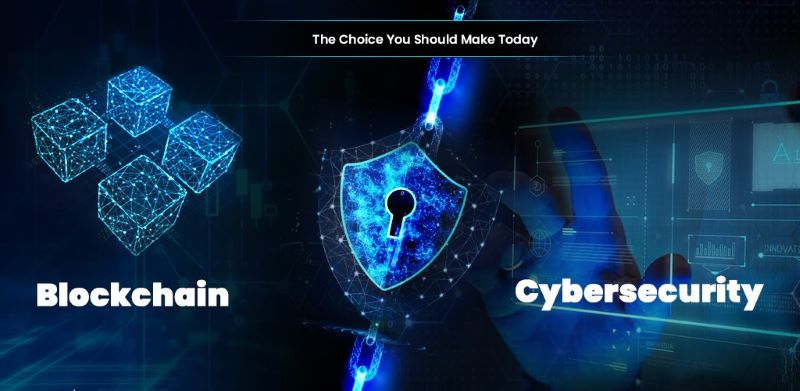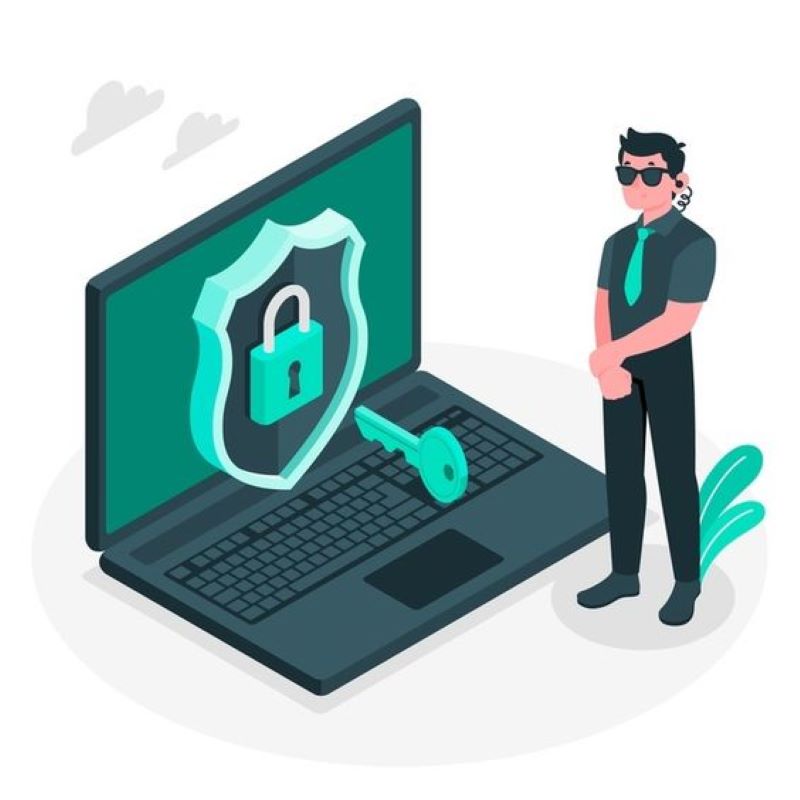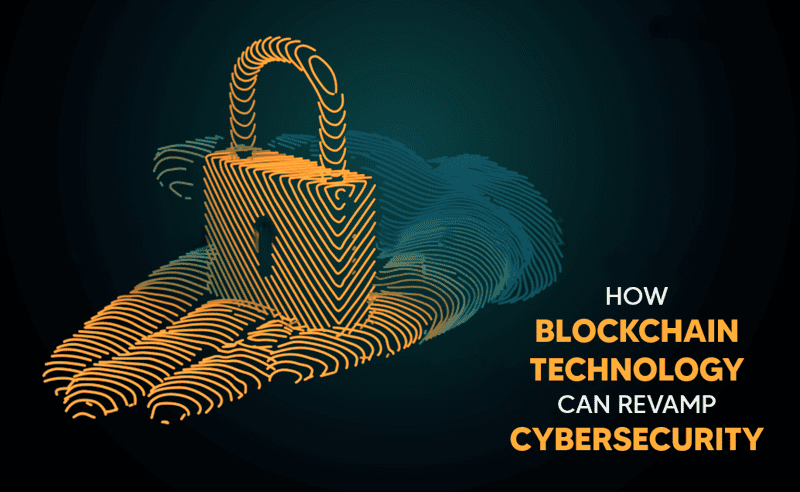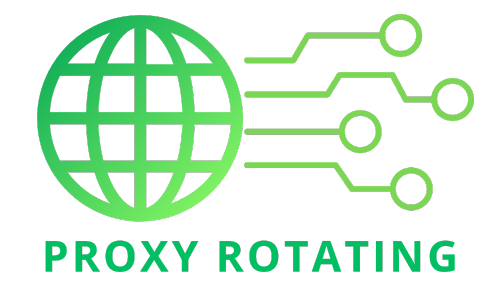In today’s digital landscape, ensuring the security of data and systems has become paramount. Two key areas garner significant attention are blockchain security vs cybersecurity. While both aim to safeguard digital assets and networks, they operate in distinct contexts with unique methodologies and challenges. Blockchain security focuses on protecting decentralized networks and ensuring the integrity of transactions through cryptographic techniques. At the same time, cybersecurity encompasses a broader range of measures to safeguard centralized systems from many threats. Understanding the differences between blockchain security and cybersecurity is essential for organizations and individuals to develop comprehensive strategies for mitigating risks and protecting against cyber threats in an increasingly interconnected world.
What is cybersecurity?
Cybersecurity protects computer systems, networks, devices, and data from unauthorized access, cyber-attacks, breaches, and other security threats. It encompasses a range of strategies, technologies, processes, and best practices designed to safeguard digital assets, ensure confidentiality, integrity, and availability of information, and mitigate the risks associated with cyber threats.
What is Blockchain Security?
Blockchain security refers to the measures, protocols, and practices implemented to protect blockchain networks, platforms, and applications from security threats, vulnerabilities, and attacks. It encompasses a range of techniques and technologies designed to ensure the integrity, confidentiality, and availability of blockchain data and transactions.

Comparing Cybersecurity and Blockchain Security
| Aspect | Cybersecurity | Blockchain Security |
| Control and Ownership | Aimed at protecting internet-connected systems and data, typically owned and controlled by centralized entities such as businesses or organizations. | Focuses on securing decentralized networks and data, with ownership and control distributed among network participants. |
| Protection Mechanisms | Relies on measures like firewalls, antivirus software, intrusion detection systems, and encryption to prevent unauthorized access and attacks. | Utilizes consensus algorithms, cryptographic hashing, and decentralized validation to ensure data integrity and prevent tampering. |
| Threat Response | A reactive approach to responding to threats as they occur, with measures to mitigate damages and restore system integrity. | A proactive approach designed to prevent threats through consensus mechanisms and cryptographic techniques, minimizing the likelihood of successful attacks. |
| Data Integrity | Emphasizes maintaining data confidentiality, integrity, and availability, focusing on preventing unauthorized access and modifications. | Prioritizes immutability and transparency, ensuring that once data is recorded on the blockchain cannot be altered or deleted, thus preserving its integrity. |
| Centralization vs. Decentralization | Centralized systems are vulnerable to attacks if the central authority is compromised. | The decentralized nature makes it more difficult for bad actors to compromise the system, as data is distributed across a network of nodes. |
| Transparency | Focuses on protecting data from unauthorized access, with transparency being secondary to confidentiality. | Prioritizes transparency, providing a tamper-proof and auditable record of transactions visible to all network participants. |
| Authentication | Relies on traditional methods like passwords, biometrics, and access control policies for user authentication and access management. | Utilizes public-private key cryptography for secure authentication and access control, with users having control over their private keys. |
How does Blockchain technology impact Cybersecurity?
Blockchain technology significantly impacts cybersecurity by introducing new approaches and solutions to various cybersecurity challenges. Here are some ways blockchain technology impacts cybersecurity:
Data Integrity: Blockchain’s immutable ledger ensures the integrity of data stored on the blockchain. Once data is recorded in a block and added to the chain, it cannot be altered or deleted without consensus from the network participants. This property enhances data integrity and prevents unauthorized tampering with sensitive information, reducing the risk of data breaches and manipulation.
Decentralization: Blockchain’s decentralized architecture distributes control and data across multiple nodes, eliminating the need for a central authority or intermediary to verify and validate transactions. Decentralization enhances resilience against cyber attacks by reducing the risk of single points of failure and eliminating the reliance on a trusted third party. It also mitigates the risk of data breaches and unauthorized access by removing central repositories of sensitive data.
Enhanced Authentication and Identity Management: Blockchain-based identity management solutions offer secure and tamper-proof identity verification, authentication, and authorization mechanisms. Decentralized identity platforms enable users to control their personal data and digital identities, reducing the risk of identity theft, phishing attacks, and account takeovers. Blockchain-based authentication systems also eliminate the need for passwords, often vulnerable to cyber attacks such as brute force attacks and credential stuffing.
Secure Transactions: Blockchain technology enables safe and transparent transactions without intermediaries or centralized authorities. Cryptographic techniques such as digital signatures and hash functions ensure transaction authenticity, integrity, and confidentiality, protecting against fraud, tampering, and unauthorized access. Blockchain-based payment systems and cryptocurrencies offer secure and efficient alternatives to traditional financial transactions, reducing the risk of payment fraud and unauthorized transactions.
Smart Contract Security: Smart contracts, self-executing code deployed on the blockchain, automate and enforce the execution of contractual agreements securely and transparently. However, smart contracts are susceptible to security vulnerabilities and exploits. By implementing secure coding practices, conducting thorough code audits, and using formal verification techniques, developers can mitigate the risk of smart contract vulnerabilities and minimize the impact of potential attacks.
Supply Chain Security: Blockchain technology enhances supply chain security by providing end-to-end visibility and traceability of goods and products throughout the supply chain. By recording each transaction and movement of assets on the blockchain, stakeholders can verify the authenticity, provenance, and integrity of products, mitigate counterfeiting, and prevent unauthorized modifications or tampering.
Data Privacy and Compliance: Blockchain technology offers solutions for data privacy and compliance by enabling secure and auditable data sharing and collaboration while preserving privacy and confidentiality. Techniques such as zero-knowledge proofs and cryptographic techniques enable selective disclosure of information without revealing sensitive data, ensuring compliance with privacy regulations such as GDPR, CCPA, and HIPAA.

Blockchain Security vs Cybersecurity: Which field is safer?
Determining which field—blockchain security vs cybersecurity—is safer is not straightforward, as both have their strengths and weaknesses.
Determining which field—blockchain security vs cybersecurity—is safer is not straightforward, as both have their strengths and weaknesses.
Cybersecurity, with its established methodologies and tools, aims to protect centralized systems and data from various threats. However, the effectiveness of cybersecurity measures can vary depending on factors such as the sophistication of attacks and the vulnerabilities present in the system.
On the other hand, blockchain security leverages decentralization, cryptographic techniques, and consensus algorithms to ensure the integrity and security of data stored on a blockchain network. While blockchain technology offers tamper-proof data and resilience against specific attacks, it is not immune to vulnerabilities such as coding errors in intelligent contracts or attacks on particular consensus mechanisms.
Ultimately, the level of safety in either field depends on various factors, including the implementation of security measures, the specific use case, and the expertise of the individuals or organizations involved. Both blockchain security and cybersecurity play crucial roles in safeguarding digital assets and systems, and a comprehensive approach combining elements from both fields may offer the highest level of protection.
Is Blockchain a viable replacement for traditional Cybersecurity?
Blockchain technology can potentially enhance cybersecurity measures but is unlikely to replace traditional cybersecurity methods entirely. Here’s why:
Complementary Nature: Blockchain and cybersecurity are not mutually exclusive but rather complementary. Blockchain can strengthen certain aspects of cybersecurity, such as ensuring data integrity and enhancing authentication processes. However, it does not address all cybersecurity concerns, such as protecting against malware or phishing attacks.
Different Focus: Blockchain primarily focuses on data integrity and transparency through decentralized ledgers and cryptographic techniques. On the other hand, cybersecurity encompasses a broader range of measures aimed at protecting networks, systems, and data from various threats, including unauthorized access, data breaches, and malicious activities.
Limitations of Blockchain: While blockchain technology offers benefits such as immutability and decentralization, it also has limitations and vulnerabilities. For instance, smart contracts deployed on blockchains can contain coding errors that lead to security vulnerabilities. Additionally, blockchain networks can still be susceptible to attacks such as 51% attacks or vulnerabilities in specific consensus mechanisms.
Need for Comprehensive Approach: Effective cybersecurity requires a comprehensive approach that includes multiple layers of defense, such as firewalls, intrusion detection systems, encryption, access control, and security awareness training. While blockchain can enhance certain aspects of cybersecurity, it is just one component of a broader cybersecurity strategy.

What are the best practices for ensuring Blockchain Cybersecurity?
The best practices for ensuring blockchain cybersecurity involve a combination of strategies and methodologies that focus on securing the blockchain network, smart contracts, and data stored on it. Here are some essential practices:
Secure Coding Practices:
- Use secure coding frameworks like OWASP to ensure that the code meets industry standards for security.
- Implement input validation, data encryption, and access control to prevent vulnerabilities.
Consensus Algorithms:
- Choose consensus algorithms that are secure and resilient to attacks, such as Proof of Stake (PoS) over Proof of Work (PoW).
Encryption:
- Secure data on the blockchain using robust encryption algorithms like AES, ensuring that only authorized parties can access it.
Smart Contract Security:
- Ensure that smart contracts are written securely, with no vulnerabilities attackers could exploit.
- Thoroughly test intelligent contracts to ensure they function as intended and that no loopholes can be exploited.
Regular Updates and Patching:
- Regularly update and patch the blockchain code to address any discovered vulnerabilities.
- Implement a bug bounty program to incentivize researchers to report any vulnerabilities they discover.
Governance Structures:
- Define the governance structure before leveraging a blockchain platform to avoid security issues.
- Ensure that the governance structure addresses procedures for different situations and methods for coping with user access.
Identity and Access Management:
- Implement precise definitions and enforcement of endorsement agreements based on business contracts.
- Use cryptographic solid essential management tools and multi-factor authentication.
Data Classification and Privacy:
- Use data classification and privacy-preserving technologies to protect sensitive information.
- Implement data minimization practices to determine what information is stored on the blockchain.
API Security:
- Follow API security best practices for the protection of API-based transactions.
- Implement privileged access management or PAM solutions to secure blockchain ledger entries.
Compliance and Security Controls:
- Enforce compliance and security controls alongside standard TLS for external and internal communications.
- Implement hardware security modules and effective security incident and event management practices.
Avoiding Large Files:
- Avoid storing large files on blockchain networks due to storage and compute costs.
- Use pointers or links to large files stored on cloud platforms, including hashes, for verification.
Permissioned Blockchains:
- Prefer permissioned blockchains that allow storage and access of data within certain boundaries.
- Use permissioned blockchains like Hyperledger to create private solutions for businesses.
Scalability and Performance:
- Determine the scalability and performance needs of the blockchain network based on specific use cases.
- Choose blockchain networks that offer exclusive value advantages of security.
Mitigation and Security best practices:
- Implement blockchain-specific governance and online/offline data security measures.
- Utilize two-factor authentication, secure storage of private keys, and regular security updates.
By following these best practices, blockchain networks can ensure robust security and protect against various threats, maintaining the integrity and reliability of the stored data.

What are the security measures in place to prevent Cyber attacks on Blockchain?
The security measures in place to prevent cyber attacks on blockchain include:
- Encryption: Strong encryption algorithms like AES are used to secure data on the blockchain, ensuring that only authorized parties can access it.
- Consensus Algorithms: Secure consensus algorithms, such as Proof of Stake (PoS) and Proof of Work (PoW), ensure the integrity of the blockchain ledger and prevent attacks like 51% attacks.
- Smart Contract Security: Smart contracts are written securely, with no vulnerabilities attackers could exploit. They are thoroughly tested to ensure they function as intended and that no loopholes can be exploited.
- Regular Updates and Patching: The blockchain code is updated and patched to address any discovered vulnerabilities.
- Governance Structures: Governance structures address procedures for different situations and methods for coping with user access.
- Identity and Access Management: Strong cryptographic key management tools and multi-factor authentication are used to secure access to the blockchain.
- Data Classification and Privacy: Data classification and privacy-preserving technologies are used to protect sensitive information.
- API Security: API security best practices are followed to secure API-based transactions.
- Compliance and Security Controls: Compliance and security controls are enforced alongside standard TLS for external and internal communications.
- Phishing Prevention: Users are educated to prevent phishing attacks by verifying the source, sender, and links before interacting, and installing reputable antimalware products and verified browser extensions.
- Routing Attack Prevention: Secure routing protocols with certificates prevent man-in-the-middle and denial-of-service attacks.
- Sybil Attack Prevention: Correct consensus algorithms are chosen to prevent Sybil attacks, and nodes are monitored to ensure they only transmit blocks from a single user.
- Tokenization: Tokens are used to transfer, store, and verify information and value efficiently and securely, with different types of tokens offering unique characteristics.
- Non-Fungible Tokens (NFTs): NFTs are designed to be cryptographically verifiable, unique, and easily transferable, providing a secure way to represent ownership and authenticity of digital assets.
- Cyber Security Goals: Blockchain technology ensures security goals such as integrity, confidentiality, authentication, non-repudiation, and availability.
These measures collectively provide robust security and help prevent cyber attacks on blockchain networks.
The Future of Blockchain Security vs Cybersecurity
The future of blockchain security vs cybersecurity will likely be characterized by continued innovation, integration, and adaptation to address evolving threats and challenges. Here are some key aspects that may shape the future of these fields:
Advanced Threats and Technologies: As technology advances, cyber threats are becoming more sophisticated, requiring cybersecurity and blockchain security vs cybersecurity solutions to evolve continuously. New technologies such as artificial intelligence (AI), machine learning, quantum computing, and the Internet of Things (IoT) will present new security challenges and offer opportunities for improving security measures.
Integration of Blockchain into Cybersecurity: Blockchain technology is expected to play a growing role in cybersecurity by providing enhanced data integrity, transparency, and decentralized security mechanisms. We may see increased integration of blockchain-based solutions for identity management, secure data sharing, and supply chain security.
Privacy and Compliance: With the growing focus on data privacy regulations such as GDPR and CCPA, blockchain vs cybersecurity security will need to prioritize privacy-enhancing technologies and compliance measures. Techniques such as zero-knowledge proofs and differential privacy may become more prevalent in both fields to ensure data protection while maintaining usability.
Collaboration and Standards: Collaboration among industry stakeholders, academia, governments, and regulatory bodies will be essential for developing blockchain security vs cybersecurity standards, best practices, and frameworks. Interoperability between blockchain platforms and cybersecurity tools will also create cohesive security ecosystems.
Education and Workforce Development: As the demand for cybersecurity and blockchain security professionals grows, education and workforce development programs will play a vital role in building a skilled workforce. This includes training programs, certifications, and academic curricula tailored to the specific skills and knowledge needed in these fields.
Resilience and Incident Response: Despite preventive measures, cyber incidents and security breaches are inevitable. Therefore, organizations must build resilience through robust incident response plans, cyber insurance, and continuous monitoring and improvement of security measures.
Regulatory Landscape: The regulatory environment surrounding cybersecurity and blockchain technology will likely evolve, with governments worldwide introducing new laws and regulations to address emerging threats and technologies. Compliance with regulatory requirements will be crucial for organizations operating in these domains.
Both blockchain security vs cyber security play pivotal roles in safeguarding our digital assets and information. While blockchain security focuses on protecting data within blockchain systems, cyber security extends to safeguarding data and systems across various digital environments. Although there are overlaps between the two fields, each serves distinct purposes in ensuring the integrity and security of our digital infrastructure. For more detailed information, please visit the Proxy Rotating website.
>>> See more:
Blockchain security transaction system project
A blockchain carries no transaction cost
A blockchain implements which of the following architectures
Course 1 blockchain fundamentals answers
